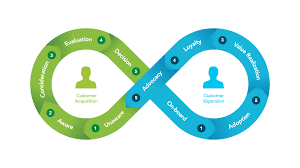Which framework requires more executive sponsorship?
HubSpot’s Loop powers program velocity. The TPG Loop adds governance, SLAs, shared datasets, and one revenue scorecard—changes that need an executive owner.
The TPG Loop requires more executive sponsorship. HubSpot’s Loop can be run by teams to iterate programs quickly; TPG adds an operating layer—governed definitions, SLA-based handoffs, shared datasets, and a single revenue scorecard—that changes how multiple functions work. That level of standardization needs an executive to set decision rights, resolve trade-offs, and enforce cadence.
Why Sponsorship Matters


Executive Sponsorship Checklist
How Sponsorship Turns Activity into Outcomes
Both frameworks accelerate learning, but they differ in operating burden. HubSpot’s Loop focuses on quick testing—creative, channels, and audiences—so marketing teams can move fast with minimal organizational change. It benefits from leadership support, yet day-to-day progress can happen without formal governance.
The TPG Loop introduces enterprise-grade alignment. It standardizes lifecycle definitions, implements SLA-based handoffs, and requires shared datasets for a single revenue scorecard. Because these decisions affect marketing, sales, service, and finance, an executive sponsor is essential to set decision rights, approve taxonomy, and hold teams accountable to the cadence. Without sponsorship, organizations see field sprawl, dueling dashboards, and slow follow-up.
Practically, appoint one executive owner, stand up a weekly Revenue Council, and publish a metric dictionary. Use HubSpot to enforce the rules: properties and lists for definitions, workflows for SLAs, sequences for sales activation, tickets for onboarding, and dashboards/datasets for a board-safe view. HubSpot’s Loop powers velocity; the TPG Loop, with executive backing, converts that velocity into predictable revenue.
Frequently Asked Questions
Put executive muscle behind predictable revenue
We’ll operationalize the TPG Loop on your HubSpot stack—definitions, SLAs, datasets, and a single scorecard—so leaders can steer growth with confidence.
Contact Us